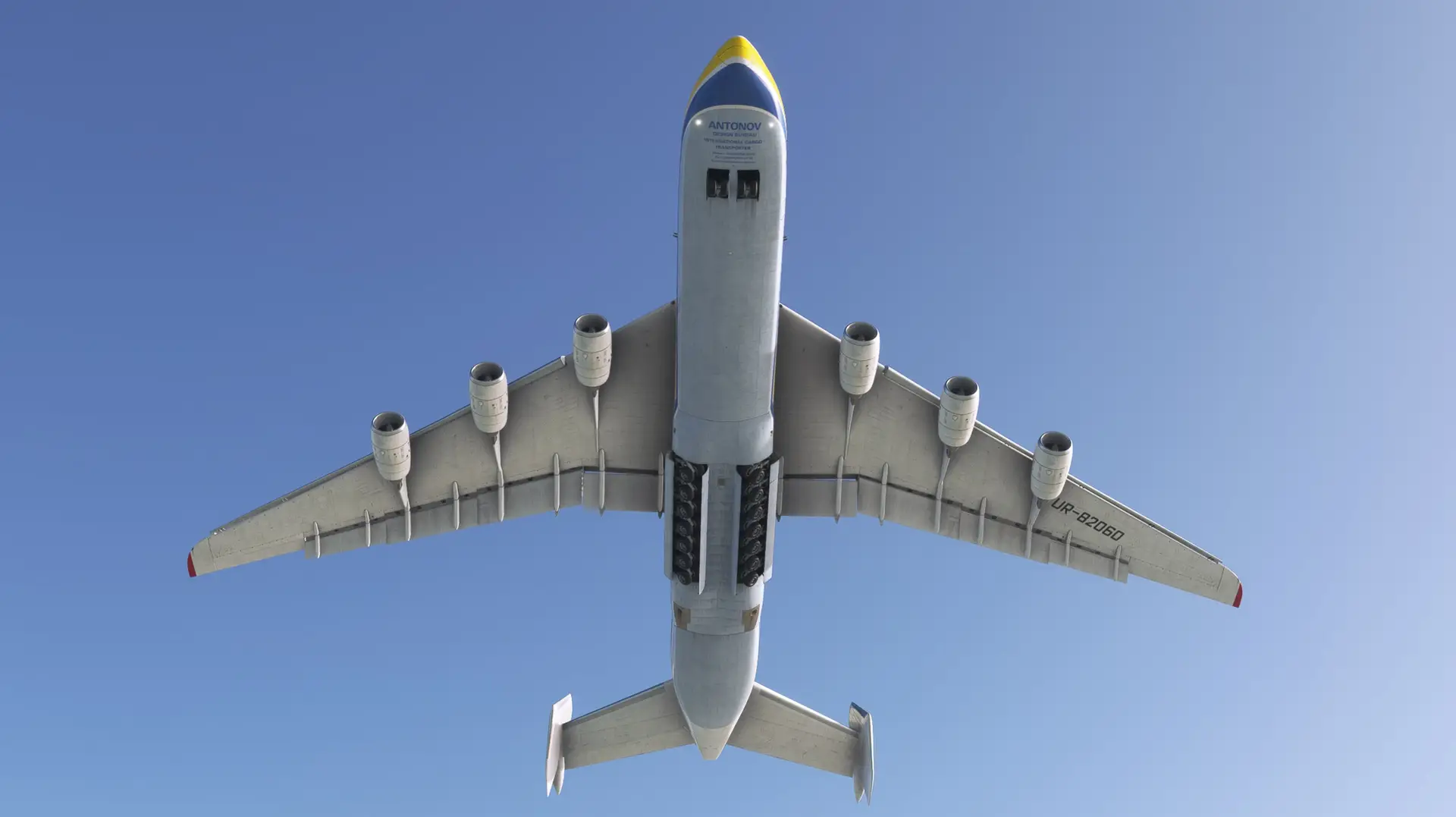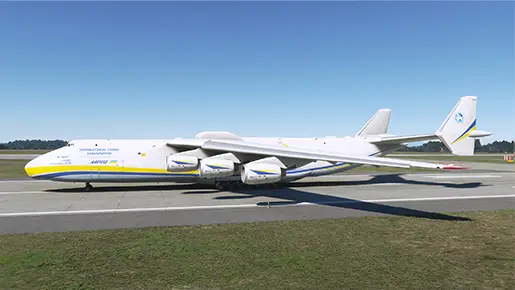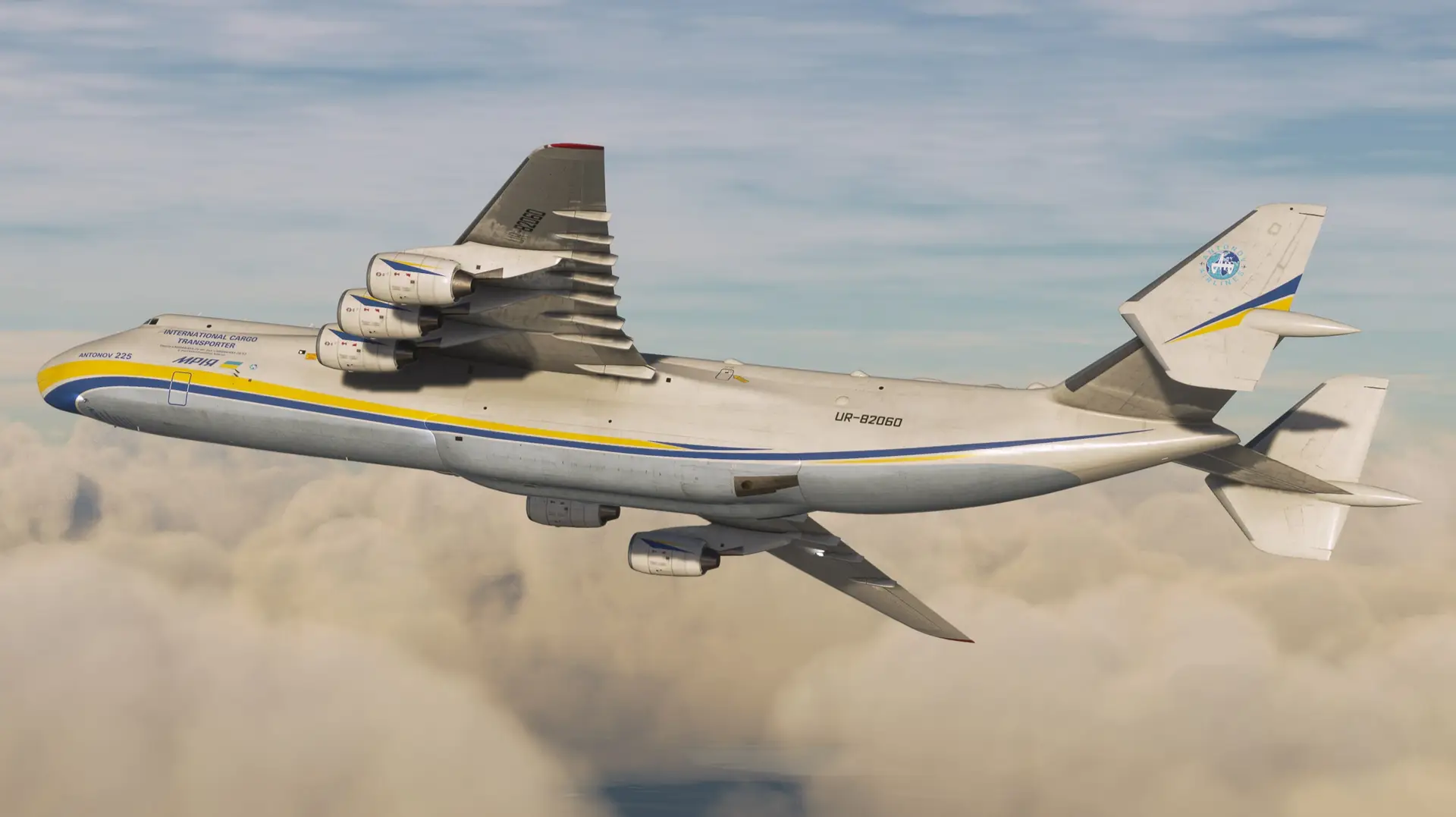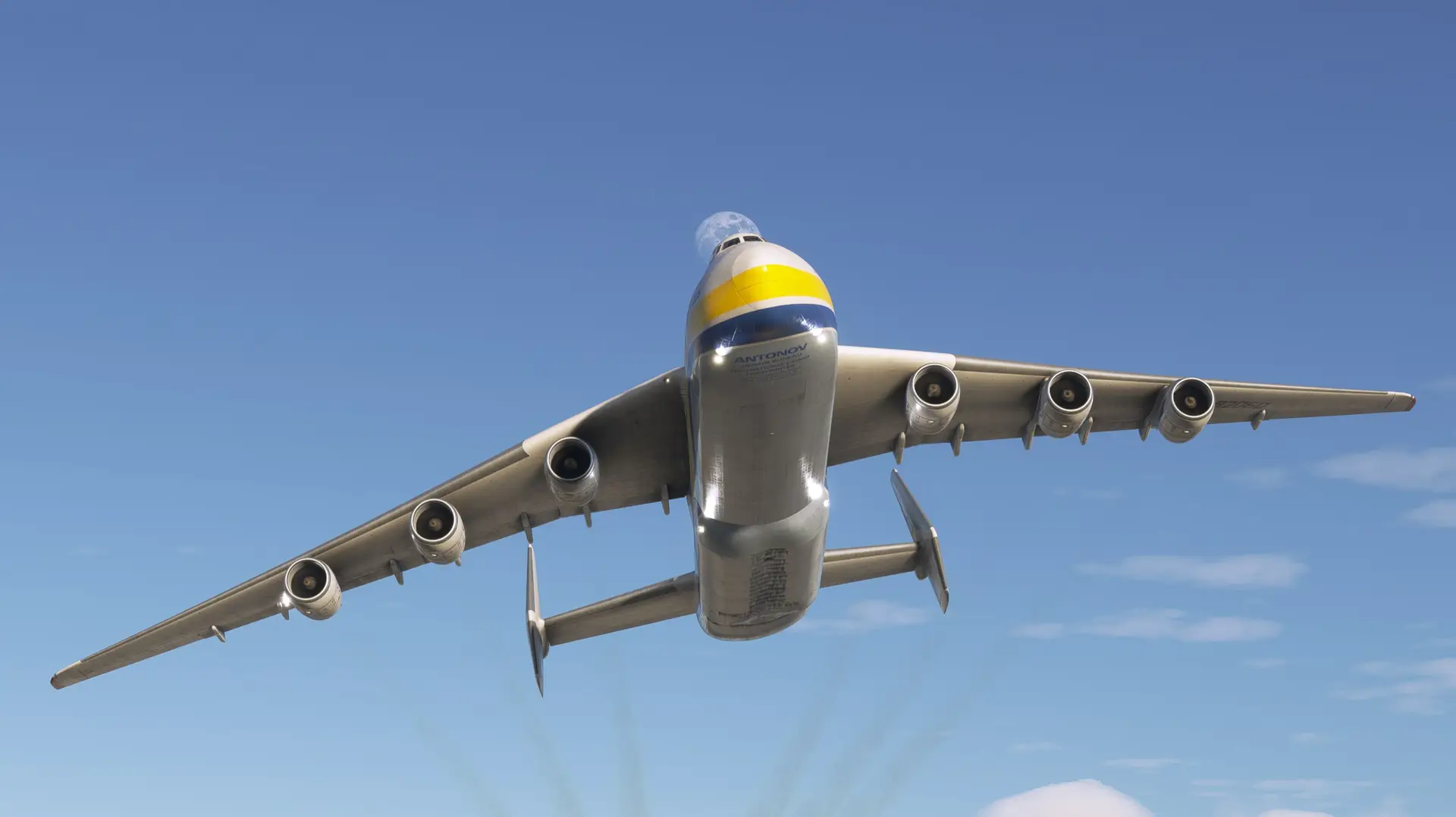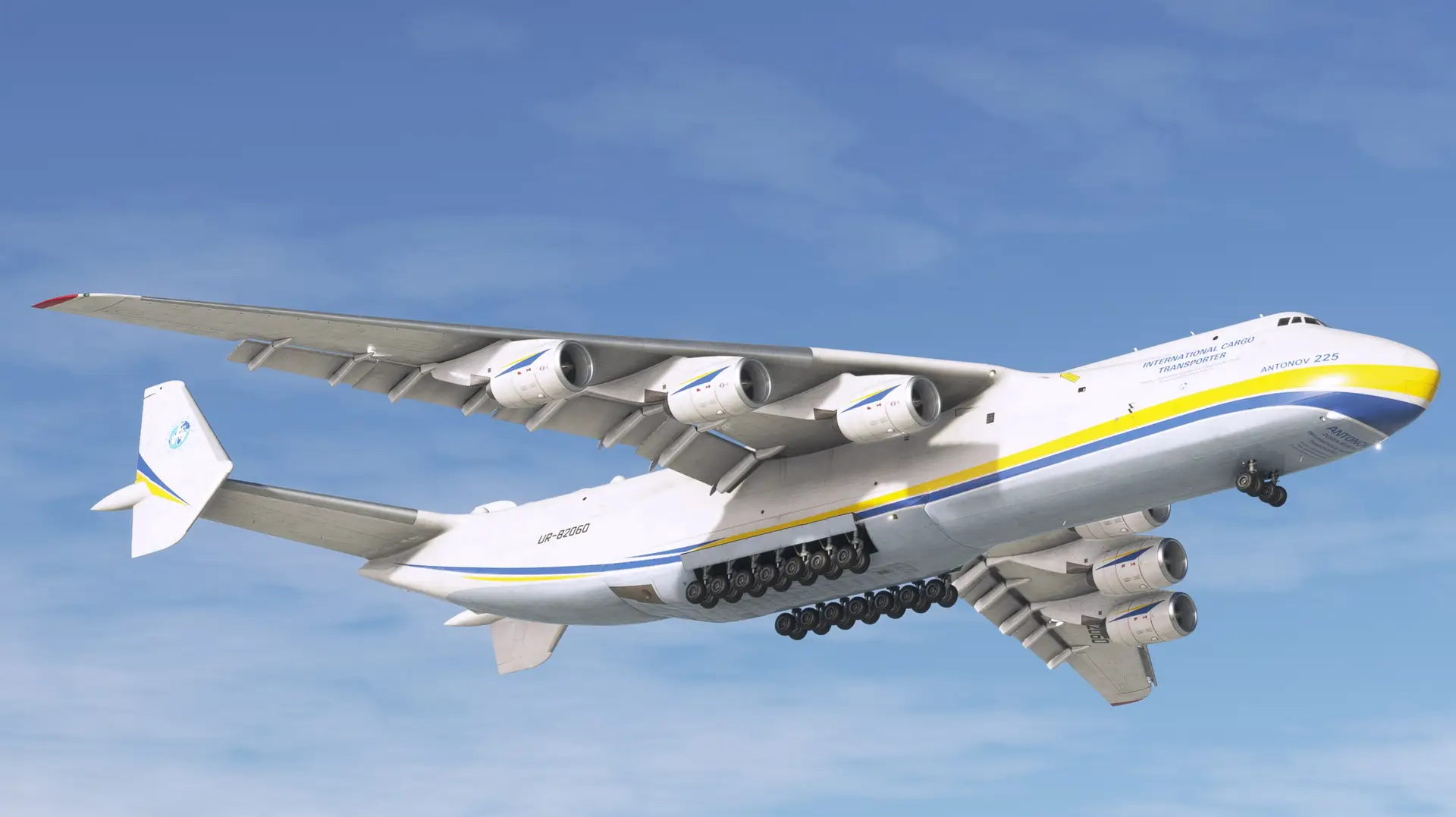The An-225 Mriya is an ultra-heavy lift jet transport aircraft built by Ukrainian aerospace company Antonov. The 6-engine An-225 holds the title of the heaviest aircraft ever built as well as a number of other size-related aviation records. Only one Mriya was completed, and it was rendered catastrophically inoperable in the 2022 Russian invasion of Ukraine, although it may be rebuilt and fly again.
The genesis of the An-225 began with the Soviet Union’s space aspirations. The program needed a heavy lift transport and potential air launch platform. The Buran program, a reusable space shuttle, was a key initiative for the Soviets that began in the 1970s. It comprised the orbiter: the Buran (which resembled the design of the American space shuttle), and the launch body, a rocket booster called Energia. Both the Buran orbiter and the Energia system needed to be transported from their respective production facilities thousands of miles to the Baikonur Cosmodrome, located in southern Kazakhstan. The only viable logistical solution was air transport. Furthermore, the Soviets envisioned launching space vehicles, notably their top secret MAKS (Multipurpose Aerospace System), from the top of a large aircraft while flying in the lower stratosphere.
Engineers looked to existing aircraft, including a repurposed Myasishchev M-4 bomber and the immense, 4-engine Antonov An-124 Ruslan heavy lift freighter. Initially settling on the An-124, engineers determined that even it, one of the largest aircraft ever built, would not be large enough.
Using the An-124 Ruslan as a design base, Antonov began engineering a project called “Article 400” in 1985. It was later named the An-225, as it was calculated that it could carry up to 225 tons of cargo. Apart from being much larger than the An-124, the Mriya (“dream” in Ukrainian) was fitted with six turbofan engines, the same powerplants used by the Ruslan. Further distinguishing it from the An-124, the An-225’s empennage took a different form from that of its smaller progenitor. Instead of one large vertical stabilizer, the An-225 was designed with two, one on each end of its horizontal stabilizer, a design dictated by the aerodynamics of carrying massive loads atop its fuselage. The landing gear also was enlarged from that of the An-124, with the Mriya having a total of 32 wheels, with the rearmost of the main landing gear assembly able to turn.
Two An-225s were slated for production, but Antonov only completed one. It took its maiden flight on December 21, 1988, becoming the heaviest aircraft ever to fly. A few months later it arrived at the Baikonur Cosmodrome and technicians fitted the Buran orbiter to its upper fuselage. Shortly thereafter, on June 17, 1989, spectators at the Paris Air Show were stunned by the sight of the massive An-225, with the Buran riding atop its form, approaching through the clouds, then landing.
The dissolution of the Soviet Union ended the Buran program, but Antonov considered a number of other possible utilities for the Mriya. These ranged from fitting it as a triple-deck passenger carrier (with a shopping center and a casino), to reviving the concept of using it as an air launch platform for space vehicles. Eventually, the great aircraft filled a niche of portaging the world’s largest air-carried loads. Tragically, the Mriya was attacked and rendered unusable on February 24, 2022 by the Russian military during their invasion of Ukraine. Tentative plans may bring the Mriya to the sky again by piecing together parts of the destroyed An-225 with those of the airframe that was never completed.
The An-225 measures 275 feet, 7 inches in length (longer than the first flight of the Wright Flyer), stands 59 feet, 5 inches tall, and has a wingspan of 290 feet. It is powered by six Progress D-18T high-bypass turbofan engines that each deliver 51,600 pounds of thrust. It can carry up to 559,580 pounds (253.8 tons) and has a maximum take-off weight of 1,410,958 pounds. It has a range of 9,600 miles, a service ceiling of 36,000 feet, it cruises at 500 miles per hour, and has a top speed of 530 mph.
